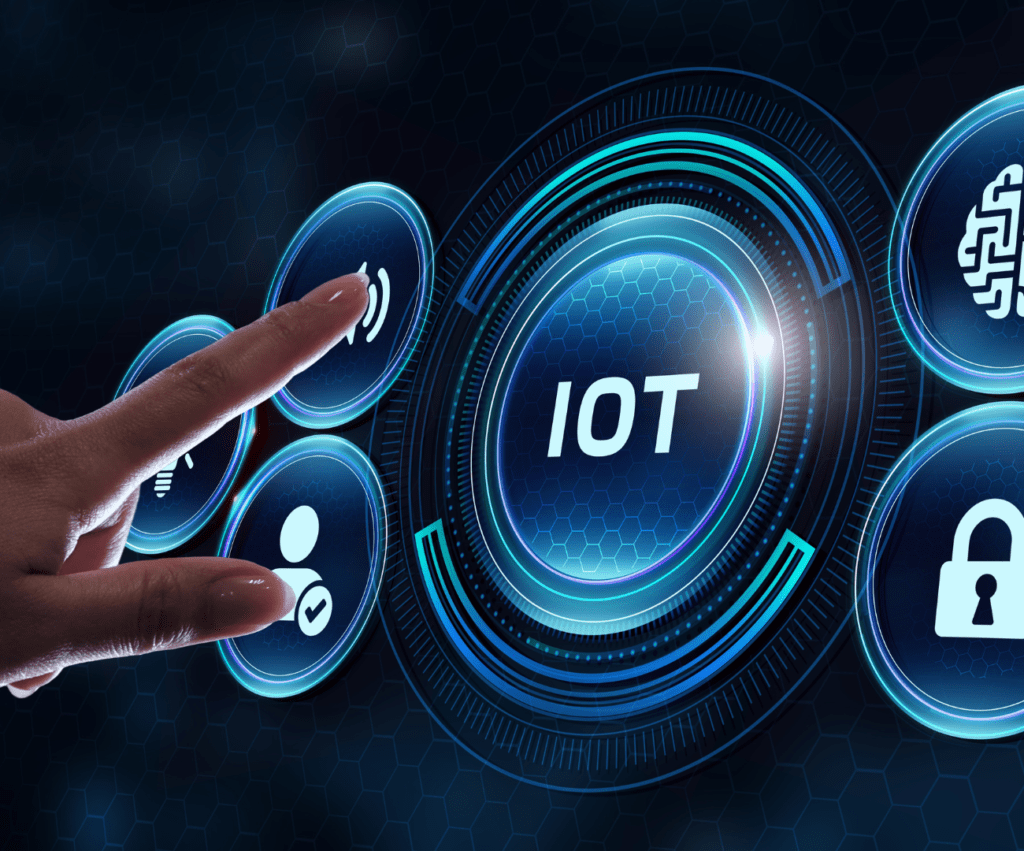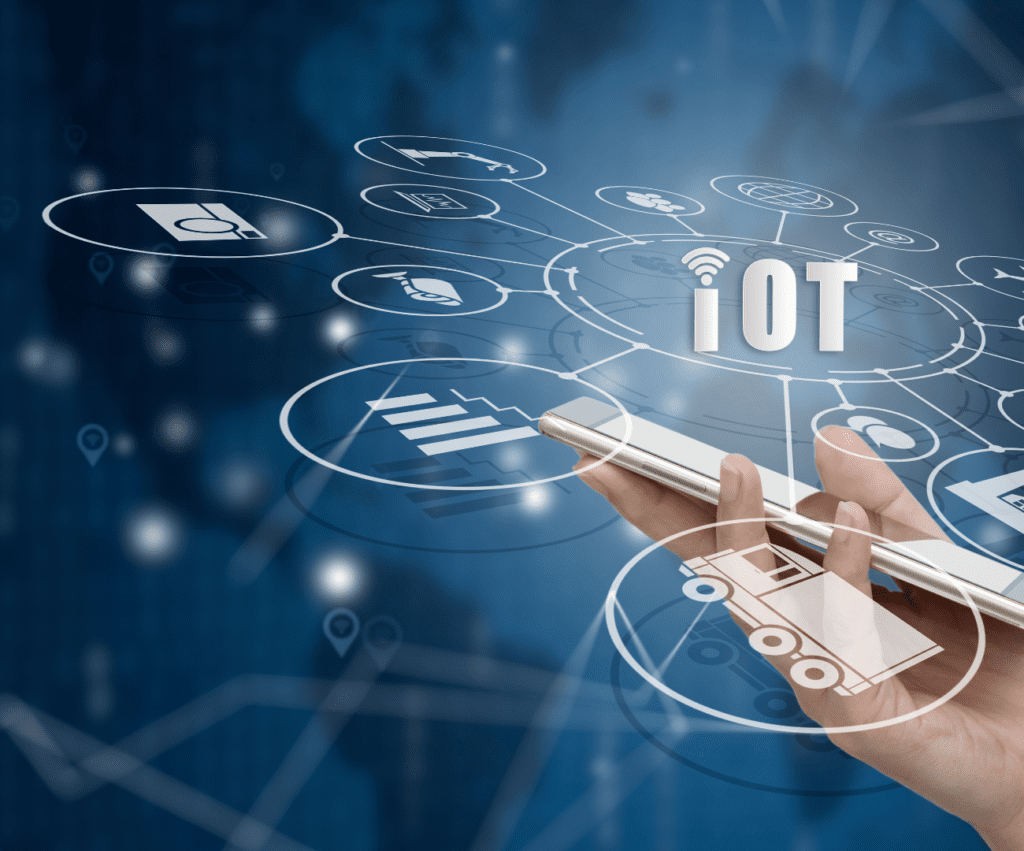Ever since the inception of technology and the internet, the sense of interconnectivity gave way to different solutions.
In that regard, the iot architecture is a concept that outlines different layers and examples that help developers to devise new gadgets, connection methods, and other solutions to improve not only the way that businesses operate with one another but also upscale the overall quality of life factor.
This post highlights the basics of iot, iot architecture, and different iot architecture layers for you to understand the concept and application prospects better.
Let’s get started.
What is IoT and Its Prospects In The Modern Day Industries?

IoT, or the Internet of Things, refers to a network of interconnected devices, objects, and sensors that can collect and exchange data over the Internet.
These devices can range from everyday objects like appliances, vehicles, and wearables to industrial machinery and infrastructure.
As a result, the IoT architecture has gained significant traction in modern-day industries due to its potential to revolutionize various sectors.
Here are some of the prospects and advantages of IoT in modern industries:
Enhanced Operational Efficiency:
IoT enables real-time monitoring, automation, and optimization of processes, leading to increased efficiency and productivity.
Connected devices can collect data and provide insights that help streamline operations, reduce downtime, and optimize resource utilization.
Improved Decision-Making:
IoT generates a wealth of data that can be analyzed and used to make informed decisions.
With the help of advanced analytics and machine learning, organizations can gain valuable insights into customer behavior, operational patterns, and market trends, enabling better decision-making and strategic planning.
Cost Reduction:
IoT can help optimize resource usage, reduce energy consumption, and minimize maintenance costs.
By leveraging data from connected devices, organizations can identify inefficiencies, predict equipment failures, and implement preventive maintenance, resulting in cost savings.
Enhanced Customer Experience:
IoT enables the delivery of personalized and context-aware experiences to customers.
By harnessing connected devices, organizations can collect valuable data on customer preferences and behaviors, enabling them to provide personalized software products, services, and support.
Safety and Security:
IoT can enhance safety and security in various industries.
Connected devices can monitor and detect potential risks, such as equipment malfunctions or security breaches, and trigger automated responses or alerts. IoT also enables remote surveillance, access control, and asset tracking, improving overall safety measures.
New Business Models:
IoT opens up opportunities for new business models and revenue streams. Organizations can offer value-added services based on IoT data, such as predictive maintenance, remote monitoring, or usage-based pricing.
IoT can also enable product-as-a-service models, where customers pay for outcomes rather than owning the physical product.
Supply Chain Optimization:
IoT facilitates real-time tracking and monitoring of goods throughout the supply chain.
This enables better inventory management, logistics optimization, and improved traceability. IoT can help reduce delays, minimize losses, and enhance overall supply chain visibility and efficiency.
IoT Architecture in Modern-Day Industry and Its Prospects for Business Developers

Moving on, the IoT architecture refers to the structure and components that enable the functioning of an IoT ecosystem.
The following are different iot architecture examples that you will often hear about, or see someone from your organization implementing those.
Perception Layer:
This layer consists of sensors, devices, and actuators that collect data from the physical world.
It involves various types of sensors, such as temperature sensors, motion sensors, or pressure sensors, that capture environmental data.
Network Layer:
The network layer facilitates communication and connectivity between devices. It includes protocols, gateways, and network infrastructure that enable data transmissions, such as Wi-Fi, Bluetooth, or cellular networks.
Data Processing Layer:
This layer processes and analyzes the collected data. It involves edge computing, where data is processed locally on devices or gateways, and cloud computing, where data is sent to the cloud for more advanced analytics and storage.
Application Layer:
The application layer encompasses the software applications and interfaces that enable users to interact with the IoT system.
It includes dashboards, analytics tools, and APIs that provide insights, visualization, and control over connected devices.
Security Layer:
Security is a critical aspect of IoT architecture.
This layer includes measures to ensure data privacy, authentication, encryption, and protection against cyber threats. It also involves device management, access control, and secure data transmission protocols.
These layers work together to enable the seamless flow of data, communication, and functionality within an IoT system, supporting the prospects and benefits mentioned above in modern-day industries.
IoT Device Architecture Benefits and Applications For Business Developers

IoT device architecture refers to the structure and components of an IoT device, including hardware, software, and connectivity, that enable its functionality and data exchange.
There are several benefits of IoT device architecture for business developers, along with various applications. Here’s an overview:
Benefits of IoT Device Architecture for Business Developers:
Scalability:
IoT device architecture allows for the scalability of IoT deployments.
Developers can design devices and systems that can easily scale up or down to accommodate changing business needs, increasing the number of connected devices, and expanding the IoT infrastructure.
Flexibility:
IoT device architecture provides flexibility in terms of device connectivity options, protocols, and integration capabilities.
This allows developers to design and integrate devices with different network technologies, such as Wi-Fi, Bluetooth, cellular, or LPWAN, ensuring compatibility with diverse environments.
Customization:
The architecture also enables customization to meet specific business requirements.
Developers can design devices with tailored functionalities, sensor configurations, and communication protocols to gather the desired data and provide specific functionalities aligned with the business use case.
Interoperability:
The interoperability between different devices and systems is also part of what this architecture is capable of delivering on.
Developers can adopt industry-standard protocols, APIs, and data formats to ensure seamless communication and integration with other devices, platforms, or third-party services.
Security:
The process emphasizes security measures to protect data and devices.
Developers can implement robust security features, such as encryption, authentication, access control, and firmware updates, to safeguard IoT devices and the data they collect.
Applications of IoT Device Architecture for Business Developers:
Smart Home Automation:
Business developers can create IoT devices and systems for smart homes, enabling automation of various tasks like lighting, temperature control, security monitoring, and appliance management. These devices can be integrated into a central hub or controlled remotely via mobile applications.
Industrial Automation:
IoT device architecture can be leveraged in industrial settings to enable automation, monitor equipment performance, track inventory, and optimize production processes. Developers can design IoT devices that collect real-time data, perform predictive maintenance, and enable remote monitoring and control.
Asset Tracking and Management:
IoT devices can be used for tracking and managing assets in industries like logistics, transportation, and healthcare. Developers can create devices with built-in GPS or RFID capabilities to monitor the location, condition, and usage of assets, improving inventory management and supply chain efficiency.
Environmental Monitoring:
IoT device architecture can be applied in environmental monitoring scenarios, such as air quality monitoring, water management, or agriculture.
Energy Management:
Developers can create IoT devices for energy management applications, allowing businesses to monitor and optimize energy consumption. These devices can collect data on energy usage, analyze patterns, and provide insights to improve energy efficiency and reduce costs.
Retail and Customer Analytics:
IoT device architecture can enable developers to create devices that capture customer behavior data, such as footfall, product interactions, or purchasing patterns. This data can be analyzed to generate insights for personalized marketing, store layout optimization, and customer engagement strategies.
Healthcare and Remote Monitoring:
IoT device architecture finds applications in healthcare, enabling remote patient monitoring, medication adherence tracking, and emergency alert systems.
As a result, developers are able to design wearable devices, connected medical devices, and data platforms to improve patient care and enable telehealth services.
These are just a few examples of how IoT device architecture benefits business developers and the potential applications in various industries.
The versatility and flexibility of IoT device architecture open up countless opportunities for innovation and digital transformation across sectors.
Partner with Blue Zorro To Unlock IoT Architecture Potential For Your Business
Blue Zorro offers a multitude of solutions within the confines of IoT architecture and latest technological advancements.
The company has a solid team with a track record of different accomplishments in the iot applications sector for new businesses to plan and implement their iot devops strategies from the get go.
We look forward to hearing from you.


